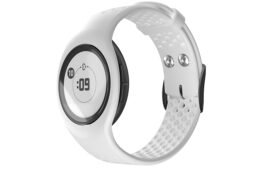
[Image from Georgia Tech]
Anemia is typically detected using a blood test. Instead, the smartphone app uses a photo of someone’s fingernails to determine if hemoglobin levels in the blood are low.
“All other ‘point-of-care’ anemia detection tools require external equipment, and represent trade-offs between invasiveness, cost and accuracy,” Wilbur Lam, one of the researchers on the project, said in a press release. “This is a standalone app that can look at hemoglobin levels without the need to draw blood.”
The researchers say that the app should be used for screening and not clinical diagnosis.
Rob Mannino, the study’s first author, wanted to conduct the research because of his experience living with beta-thalassemia, which is an inherited blood disorder that is caused by a mutation in the beta-globing gene.
“Treatment for my disease requires monthly blood transfusions,” Mannino said. “My doctors would test my hemoglobin levels more if they could, but it’s a hassle for me to get to the hospital in between transfusions to receive this blood test. Instead, my doctors currently have to just estimate when I’m going to need a transfusion, based on my hemoglobin level trends.”
The researchers suggest that the app could allow patients to self-manage their chronic anemia and monitor their disorder to determine times that they may need to adjust therapies or receive transfusions. As a result, the app could help reduce side effects or complications that occur from having blood transfusions too early or late.
“This whole project couldn’t have been done by anyone but Rob,” Lam said. “He took pictures of himself before and after transfusions as his hemoglobin levels were changing, which enabled him to constantly refine and tweak his technology on himself in a very efficient manner. So essentially, he was his own perfect initial test subject with each iteration of the app.”
Anemia is the most common blood disorder, according to the American Society of Hematology. It affects more than 3 million Americans. Anemia is diagnosed with a blood tests a hemoglobin value of less than 13.5 grams/deciliter in a male and less than 12.0 grams/deciliter in a woman. The values differ in children. The blood disorder causes a lack of oxygen, causing symptoms such as weakness, shortness of breath, fast or irregular heartbeat, chest pain and more.
The Georgia Tech-developed smartphone app could be used by anyone at any time and could be beneficial to pregnant women, women with abnormal menstrual bleeding or in runners/athletes. The app’s mobility also means it could be used in developing countries after meeting strict accuracy requirements for clinical diagnostic tools.
To test the app’s accuracy, the researchers studied photos of fingernails and compared the color of the fingernail beds with hemoglobin levels measure from a complete blood count blood test in 337 people who were healthy or had a variety of anemia diagnoses. The algorithm the app uses was developed with 237 of the test subjects and then tested on the remaining 100 people.
The app was able to measure hemoglobin level with an accuracy of 2.4 grams/deciliter with 97% sensitivity, all from a single photo without personal calibration. The researchers then tested the app with personal calibration on four patients over several weeks. The results showed that personal calibration improved the accuracy to 0.92 grams/deciliter, which is a degree of accuracy that is slimier to other point-of-care blood-based tests.
Since the app uses the fingernail beds that don’t contain melanin, the test is able to be used on a variety of skin tones. The researchers say that the accuracy is consistent in both dark and light skin tones.
The Georgia Tech researchers are working with doctors at Children’s and Emory to calibrate their system with additional data.
“This is just a snapshot of the accuracy right now,” Lam said. “The algorithm gets smarter with every patient enrolled.”
The research was published in the journal Nature Communications and was supported by the National Science Foundation, the 2017 Massachusetts General Hospital Primary Care Technology Prize and National Institutes of Health.




